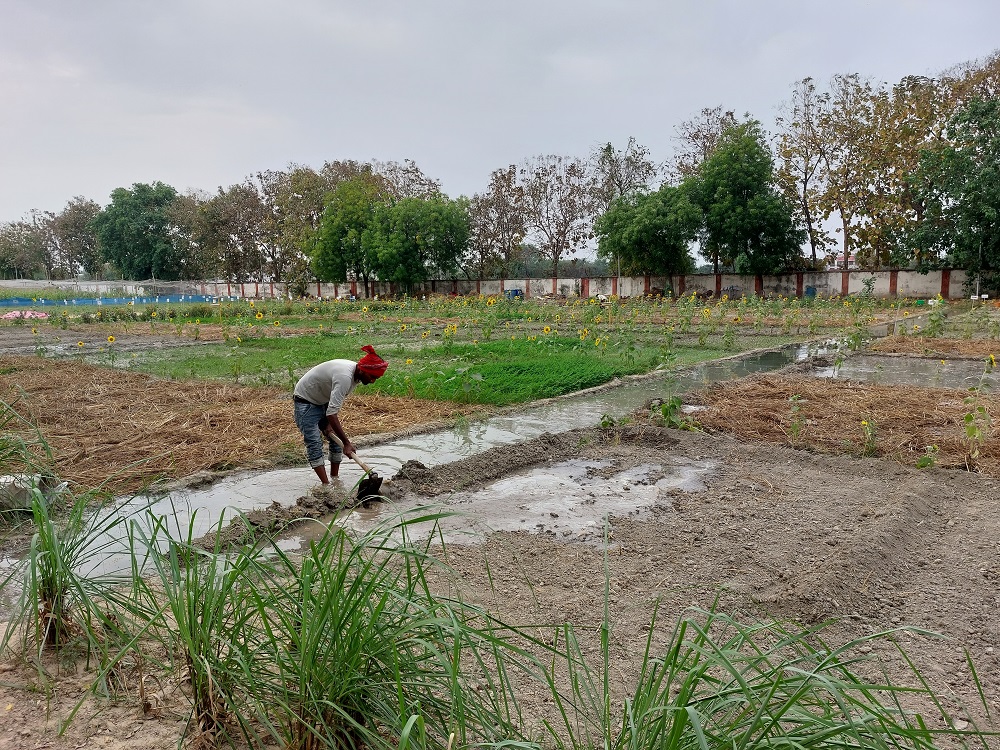by Ajay Kumar Mishra, Pidikiti Pavithra, Manas Ranjan Sahoo, and Sheetal Sharma
Regenerative agriculture presents a holistic approach to farming that focuses on enhancing soil fertility, carbon content, and nutrient availability and integrates beneficial insects, birds, and other animals into the agricultural system. However, developing an agro-biodiversity index (ABDI) is necessary to evaluate the impact of resource-intensive and regenerative agricultural practices on agro-biodiversity at different scales.
The world is facing a rapid decline in biodiversity, including vital agro-biodiversity crucial in supporting agriculture and food production. Agro-biodiversity encompasses cultivated crops, livestock, wild plants, animals, and microorganisms contributing to essential ecological processes such as pollination, nutrient cycling, and pest control.
To combat this decline and improve nutrient outcomes, adopting sustainable farming practices prioritizing nutrition and biodiversity is imperative.
Regenerative agriculture presents a holistic approach to farming that focuses on enhancing soil fertility, carbon content, and nutrient availability and integrates beneficial insects, birds, and other animals into the agricultural system.
To evaluate the impact of resource-intensive and regenerative agricultural practices on agro-biodiversity, the agro-biodiversity index (ABDI) offers a measurable parameter aimed at enabling policymakers, non-governmental organizations, civil society leaders, and businesses to understand relationships between dimensions of agrobiodiversity across the food system, compare agrobiodiversity use and conservation across countries, and identify priority interventions to enhance agrobiodiversity for more sustainable food systems.
The ABDI was developed under the leadership of Bioversity International (now in Alliance with the International Center for Tropical Agriculture) in collaboration with various stakeholders, including the public and private sectors, development agencies, and non-governmental organization representatives.
When considering the ABDI, specifically for regenerative agriculture practices, the indicators should primarily assess the diversity and conservation of agro-biodiversity within these farming systems. The following indicators and sub-indicators can be included (see Figure 1).
Figure 1: Indicators and sub-indicators for interpreting ABI.
Calculating the ABI involves aggregating data from various indicators related to agroecosystem diversity.
While there is no standard formula for the ABI, the following generalized approach can be used:
- Determine the indicators.
- Collect data: Gather data for each indicator at the desired spatial scale (e.g., farm, region, or country) through surveys, agricultural census reports, biodiversity assessments, or other relevant sources.
- Normalize the data: Ensure that the data for each indicator are on a comparable scale by standardizing or transforming the values into relative proportions.
- Assign weights: Attribute weights to each indicator based on their relative importance in contributing to agro-biodiversity. These weights can be determined through expert judgment or stakeholder consultations.
- Calculate sub-indices: Compute sub-indices for each indicator by multiplying the normalized values by their respective weights, thereby quantifying their contribution to overall agrobiodiversity.
- Aggregate the sub-indices: Sum up the sub-indices to obtain the overall ABI value. If required, this can be achieved through simple addition or weighted summation for further differentiation.
These indicators align with the core principles of regenerative agriculture, emphasizing the enhancement of biodiversity, soil health, and ecological resilience. The selection and customization of indicators may vary depending on the local context, available data, and specific goals of assessing the ABI for regenerative agriculture practices.
To promote ecological agriculture, it is crucial to implement comprehensive policies that facilitate the increase of native pest and pollinator populations, benefiting the agricultural landscape. Additionally, incentives should be provided to farmers who cultivate native varieties and conserve genetic diversity.
Furthermore, standardizing the ABI is essential for evaluating agricultural systems at a landscape scale.
Read more about ABI:
Jones SK, Estrada-Carmona N, Juventia SD, et al. (2021) Agrobiodiversity Index scores show agrobiodiversity is underutilized in national food systems. Nat Food 2, 712–723
